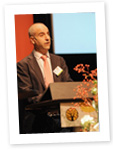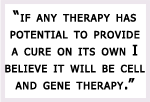HIV-vaccinations and cure - an interview with Prof. Martinez-Picado
 Q. Could you tell us a little about your background in HIV/AIDS research, and what your main interest in this area is?
Q. Could you tell us a little about your background in HIV/AIDS research, and what your main interest in this area is?
I am currently working as an ICREA Research Professor at the AIDS Research Institute (IrsiCaixa) in Barcelona. At this institute we focus on HIV pathogenesis, a field we have been working in for many years. Initially, our focus was on HIV drug resistance and viral fitness, but now we focus on the three main problems that exist with HIV; Firstly there are the dendritic cells and the role they play in the dissemination of the virus in the human body. We are trying to design compounds and antibodies that may block the interaction between the virus and the receptor in those cells that is responsible for viral capture and trans-infection; Secondly we focus on HIV eradication, whereby we want to quantify the latent reservoirs by using different techniques; Lastly we try to understand why the progression of the virus is different for different people. This is called rapid progression and is defined by people who lose their CD4 T-cell counts very quickly after infection. We want to understand why those people move so fast towards progression in HIV infection.
Q. You’ve worked on various HIV/AIDS vaccine development projects. What do you see as the main challenges for developing an effective vaccine?
When we talk about vaccines we want to be clear that there are two types of vaccines: prophylactic vaccines that we can use to protect non-infected individuals of getting  infected when they come into contact with the virus; and therapeutic vaccinations for the individuals already infected with HIV, whereby we try to reinvigorate their immune system to fight the infection.
infected when they come into contact with the virus; and therapeutic vaccinations for the individuals already infected with HIV, whereby we try to reinvigorate their immune system to fight the infection.
The problem with both vaccine strategies is that they are complex. With a therapeutic vaccination the virus has already damaged the immune system of the infected person so badly, it makes it difficult to rescue and recover it. However, because we can design in vivo studies with volunteers who are already infected, this makes it easier to understand how effective a potential therapeutic vaccine is. With prophylactic vaccination this is more problematic; we need to have huge cohorts, thousands of people who might be at risk, in order to understand whether vaccine candidates work. Such trials are extremely expensive and there is not much financial support for them.
But as I emphasized in my presentation at NCHIV: I don’t think that the challenge should preclude the effort to find a vaccination. We continually see articles and papers that bring new light to the field of HIV. The important thing is going to be to get a good combination of what we call “cellular responses” and “humoral responses”, so cytotoxic cells and antibodies that might fight the infection in combination with each other. So far most of the strategies for finding a vaccination are only using either cell immunology or humoral immunology. Additionally, something that very few people consider is “mucosal immunity”, which can also be used to protect against HIV. HIV goes mainly through mucosa during infection and by stimulating the production immunoglobulin A in mucosa we can protect against the infection.
Q. What do you think the best lead is for a cure for HIV?
The problem with HIV is that each cell where the virus is, is different. Macrophages are different from T-lymphocytes and T-lymphocytes will be different from astrocytes, etc.  Therefore it is probably a combination of therapies that may help to flush out the reservoirs, and this is also what I emphasized in my presentation.
Therefore it is probably a combination of therapies that may help to flush out the reservoirs, and this is also what I emphasized in my presentation.
If any therapy has potential to provide a cure on its own I believe it will be cell and gene therapy. There are groups already working in vivo with these techniques, in which they are manipulating ex-vivo cells from HIV-infected individuals and implant those cells without the viral receptors into the body. The cells stay there for a long time, but the only problem is that they will coexist with autologous cells that have not been modified. That could be improved by using for example stem cells to make sure the autologous T-lymphocytes can use the same strategy. That way you will have a greater homeostatic proliferation of those primary precursors to have more cells that are going to be refractory to the HIV infection.
With regards to the other strategies such as treatment optimisation and intensification, reversal of HIV-latency, therapeutic vaccination, and immune-based therapies, I don’t believe these will likely create a complete cure for HIV on their own. However, using them in combination with each other might provide an answer to finding a cure for HIV.
